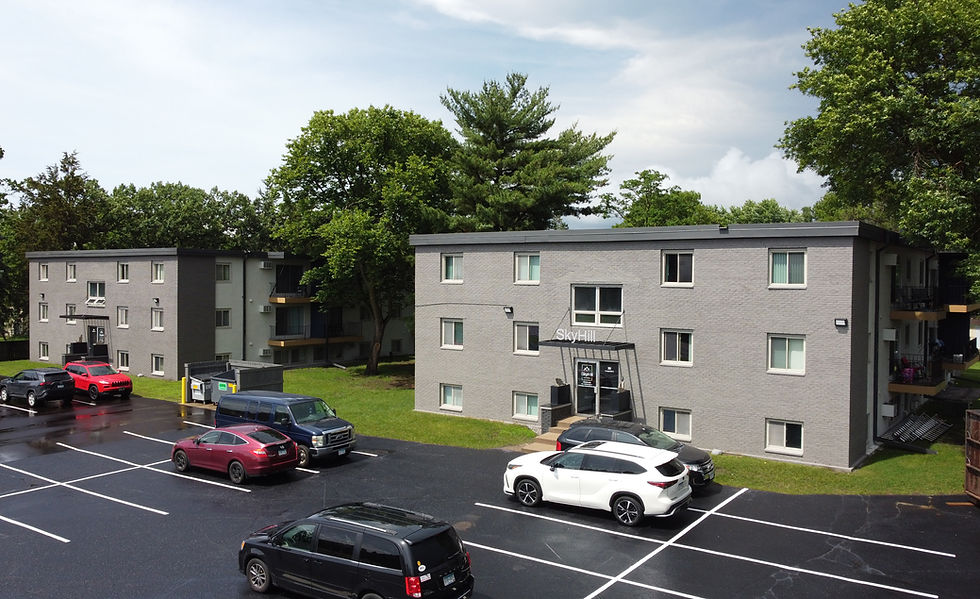How North Dakota briefly had the highest rents in the nation
- Ridgeview Property Group

- Jun 18, 2024
- 4 min read
Updated: Jan 7

13 years ago, rent prices in parts of North Dakota were the highest in the nation.
That's when a modern-day oil boom was playing out in the Bakken Formation of North Dakota. The housing story was something to behold: insatiable demand for apartments, the highest rent prices in the nation, and a rush to build housing as quickly as possible. Thousands of apartment units were rapidly built, only to have demand dry up sooner than expected.
Today, we will cover the housing boom and bust that occurred in the Bakken formation in northwest North Dakota.
Oil Discovery and Economic Boom
The region experienced a significant oil boom starting in 2006 due to advancements in hydraulic fracturing (fracking) and horizontal drilling. These technologies made the underlying shale oil in the Bakken Formation recoverable for the first time. What followed was a rapid increase in oil drilling, attracting workers from across the US and pumping millions into the local economies.
The cities in the center of the Bakken were catapulted into growth mode. Williston, Tioga, Watford City, and Newtown saw their populations double in a matter of years. Growing pains would be an understatement; the local restaurants, convenience stores, and gas stations couldn’t keep up with demand from their new citizens. Packed restaurants were common, gas stations ran out of gas, and convenience stores often ran low on goods. Famously, workers at the Walmart in Williston gave up on stocking shelves. When new products arrive, workers simply drop the pallet on the store floor, and it would be emptied by customers within hours.
While the nation was facing a job crisis, wages in the Bakken skyrocketed. The oilfields were paying workers an average of $76K per year, and local businesses had to increase their wages to keep up. Off the oil patch, the going salary for unskilled labor in the area was $60K per year. Pay any less and your employees would quickly leave for higher-paying opportunities in town
Unprecedented Housing Demand
The surge in population led to an incredibly high demand for apartments. Every building was 100% full with waiting lists, and consequently, rents climbed to record levels. In 2012, a 1BR in Williston, ND, averaged $2,394, making it the most expensive market in the US. For comparison, the second most expensive market was San Francisco, with 1 BRs averaging $1,881/mo., while the same unit in NYC was $1,537/mo.
Seizing the opportunity, developers rushed in and began building apartment buildings, hotels, and temporary housing (AKA man camps) as quickly as they could. Sourcing the materials and the labor to complete any construction project in the area was a huge challenge, but the reward was an instant lease-up at lofty rents.
Early developers made incredible returns. As rents soared, these projects exceeded 20% YoC (Yield on Cost). This means that after all expenses, the annual net income of the property was equal to one-fifth of the project’s overall cost. At a 20% YoC, these early investors could often pay off the property’s debt within 3-4 years.
For real estate investors looking to acquire multifamily in the Bakken, the valuation math was quite atypical. At the time, a newer apartment complex in a comparable market might trade for a 7% cap rate. In the Bakken, new complexes were priced at a ± 12% cap rate. The elevated cap rate reflects the high-risk nature of these investments, and that investors wanted to be compensated accordingly. They knew that this property was currently a cash cow, but the winds of change could shift at any moment.
The Bust
The music stopped all too soon. When global oil prices plummeted in 2014 due to oversupply and other market factors, the region's economic foundation was severely impacted. Oil well drilling operations began to drop in numbers, and so did the corresponding job opportunities.
As workers left in search of employment elsewhere, apartment vacancies shot up. Apartment managers immediately began cutting rents to maintain occupancy. Between 2015 and 2017, rental income for apartments in the Bakken dropped 65%.
Property values and rents plummeted. Developers and investors who had invested too late faced significant financial losses. Some projects were left incomplete or abandoned.
The Bakken Today
Today, the median rent for a 1BR in Williston is $945. This represents a 61% drop in rent since 14 years ago. A 2BR can be had for $1,120, and a 3BR is $1,325. Thanks to oversupply, vacancies have averaged 10%, or almost double the national average. The Bakken oil boom and the corresponding housing boom serve as a cautionary tale about the volatility of resource-dependent economies and the effect of overbuilding.
On the bright side, all the added housing has made it a more affordable place to live. The economic boom also provided cities in the Bakken with funding to make great advances in their infrastructure. Williston, for example, was able to fund a new airport, fire station, recreation center, plus build an improved water treatment facility.
Perhaps most surprisingly, the population in Williston and other Bakken cities has climbed higher since the bust. Williston’s population today sits at 27,000 versus 25,000 in 2015. Even without the numerous high-paying oil drilling jobs, thousands have decided to put down roots in the area. Evidently, many who came in search of riches found plenty of other reasons to stay.
-Ben Michel
Ben Michel is the founder of Ridgeview Property Group, an investment firm specializing in acquiring multifamily real estate. Register Here to be notified of available investment opportunities.




